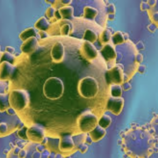We found 19 results that contain "health"
Posted on: Smoke test group

Helthy diet
A healthy diet chart typically includes a variety of foods from different food groups, emphasizing fruits, vegetables, whole grains, lean proteins, and healthy fats. It also focuses on portion control and mindful eating. A sample 7-day diet chart could include options like oatmeal with berries and nuts for breakfast, grilled chicken salad for lunch, and salmon with sweet potatoes for dinner.
Here's a more detailed breakdown of what a healthy diet chart might look like, including examples of meals:
Key Components of a Healthy Diet:
Fruits and Vegetables: Aim for a variety of colors and types. They are rich in vitamins, minerals, fiber, and antioxidants.
Whole Grains: Choose brown rice, quinoa, oats, whole-wheat bread, and other whole grains over refined grains.
Lean Proteins: Include sources like chicken, fish, beans, lentils, tofu, and low-fat dairy products.
Healthy Fats: Opt for sources like avocados, nuts, seeds, and olive oil.
Hydration: Drink plenty of water, and limit sugary drinks.
Limit Processed Foods, Sugary Drinks, and Saturated Fats: These can contribute to health problems.
Here's a more detailed breakdown of what a healthy diet chart might look like, including examples of meals:
Key Components of a Healthy Diet:
Fruits and Vegetables: Aim for a variety of colors and types. They are rich in vitamins, minerals, fiber, and antioxidants.
Whole Grains: Choose brown rice, quinoa, oats, whole-wheat bread, and other whole grains over refined grains.
Lean Proteins: Include sources like chicken, fish, beans, lentils, tofu, and low-fat dairy products.
Healthy Fats: Opt for sources like avocados, nuts, seeds, and olive oil.
Hydration: Drink plenty of water, and limit sugary drinks.
Limit Processed Foods, Sugary Drinks, and Saturated Fats: These can contribute to health problems.
NAVIGATING CONTEXT
Posted on: #iteachmsu


Why are my cholesterol numbers important? AdditionLLY Added https://iteachmsu.venturit.org/
https://iteachmsu.venturit.org/ Your cholesterol numbers are important because they help you know your risk for heart disease. Cholesterol is a type of lipid (fat) that helps your body perform many important functions. But too much cholesterol in your blood is bad for you. It can enter your artery wall, damage its integrity and lead to the formation of atherosclerotic plaque (hardened deposits).
This process of plaque buildup is called atherosclerosis. It can lead to serious problems like:
Coronary artery disease: Blocked blood flow to your heart.
Peripheral artery disease: Blocked blood flow to your legs and arms.
Carotid artery disease: Blocked blood flow to your brain.
Cholesterol travels through your blood silently. And it turns into plaque silently. Plaque buildup is like someone tip-toeing on carpet. You might not see or notice its presence for a long time. You may have no symptoms until you have a heart attack or stroke. At that point, the plaque is like high heels on a hardwood floor. And it’s already caused serious damage to your body.
You can live for many years with high cholesterol and not even know it. That’s why it’s essential to get your cholesterol numbers checked on a regular basis. If your cholesterol numbers are too high (hyperlipidemia), that’s a red flag for you and your healthcare provider. High cholesterol is a major risk factor for heart disease. But catching it early gives you a chance to make changes and get your cholesterol to a healthy level.
This process of plaque buildup is called atherosclerosis. It can lead to serious problems like:
Coronary artery disease: Blocked blood flow to your heart.
Peripheral artery disease: Blocked blood flow to your legs and arms.
Carotid artery disease: Blocked blood flow to your brain.
Cholesterol travels through your blood silently. And it turns into plaque silently. Plaque buildup is like someone tip-toeing on carpet. You might not see or notice its presence for a long time. You may have no symptoms until you have a heart attack or stroke. At that point, the plaque is like high heels on a hardwood floor. And it’s already caused serious damage to your body.
You can live for many years with high cholesterol and not even know it. That’s why it’s essential to get your cholesterol numbers checked on a regular basis. If your cholesterol numbers are too high (hyperlipidemia), that’s a red flag for you and your healthcare provider. High cholesterol is a major risk factor for heart disease. But catching it early gives you a chance to make changes and get your cholesterol to a healthy level.
NAVIGATING CONTEXT
Posted on: #iteachmsu


Smoke test article, What is causing my back pain, and how can I remedy it? -- edited
Common causesTrusted Source of back pain include:
Strains and sprains
Strains are injuries to muscles or tendons, while sprains affect the ligaments. Examples of movements that could lead to one of these injuries include:
pushing, pulling, lifting, or carrying something
bending over
twisting the spine abruptly
coughing or sneezing
Other types of injury that can causeTrusted Source back pain include whiplash and fractures.
Learn the difference between a sprain and a strain.
Posture
Posture refers to how a person holds themselves when sitting or standing. Over time, some postures can leadTrusted Source to pain.
Examples of postures that may eventually cause pain include:
forward head posture, which is when the head juts forward over the spine
slouching, which involves sitting or standing with rounded shoulders
hyperlordosis, which is when the hips tilt forward, arching the lower back
Everyday activities can also mean a person adopts an unhealthy posture for prolonged periods. Examples include:
driving
using a laptop or computer that is too low down
sitting in chairs or on couches that do not support the back
sleeping on an unsupportive mattress
Learn more about different types of posture.
Structural problems
Some structural problems of the spine may also result in back pain. These can includeTrusted Source:
Ruptured disks: Disks cushion each vertebra in the spine. If the disk ruptures, it exerts more pressure on a nerve, resulting in back pain. Sometimes, this pain may travel through the buttock and down the back of a leg. This is known as sciatica.
Bulging disks: Similarly, a disk that bulges from its place between the bones can put pressure on a nerve. Sometimes, this may also result in sciatica.
Arthritis: Osteoarthritis can cause problems with the joints in the hips, lower back, and other areas of the body. Sometimes, the space around the spinal cord narrows. Health experts call this spinal stenosis.
Osteoporosis: This causes the bones to become brittle and porous. When this leads to fractures, osteoporosis may cause back pain.
Curvature of the spine: Back pain can occur if the spine curves too much. An example is scoliosis, in which the spine curves to the side.
Other causes
Other factors that may lead to back pain include:
kidney stones
menstrual cramps
endometriosis
pregnancy
infections of the spine, bladder, kidneys, or reproductive system
shingles, which lies dormant in nerves and can reactivate, causing a painful rash along the nerve path
cauda equina syndrome
cancer of the spine
Strains and sprains
Strains are injuries to muscles or tendons, while sprains affect the ligaments. Examples of movements that could lead to one of these injuries include:
pushing, pulling, lifting, or carrying something
bending over
twisting the spine abruptly
coughing or sneezing
Other types of injury that can causeTrusted Source back pain include whiplash and fractures.
Learn the difference between a sprain and a strain.
Posture
Posture refers to how a person holds themselves when sitting or standing. Over time, some postures can leadTrusted Source to pain.
Examples of postures that may eventually cause pain include:
forward head posture, which is when the head juts forward over the spine
slouching, which involves sitting or standing with rounded shoulders
hyperlordosis, which is when the hips tilt forward, arching the lower back
Everyday activities can also mean a person adopts an unhealthy posture for prolonged periods. Examples include:
driving
using a laptop or computer that is too low down
sitting in chairs or on couches that do not support the back
sleeping on an unsupportive mattress
Learn more about different types of posture.
Structural problems
Some structural problems of the spine may also result in back pain. These can includeTrusted Source:
Ruptured disks: Disks cushion each vertebra in the spine. If the disk ruptures, it exerts more pressure on a nerve, resulting in back pain. Sometimes, this pain may travel through the buttock and down the back of a leg. This is known as sciatica.
Bulging disks: Similarly, a disk that bulges from its place between the bones can put pressure on a nerve. Sometimes, this may also result in sciatica.
Arthritis: Osteoarthritis can cause problems with the joints in the hips, lower back, and other areas of the body. Sometimes, the space around the spinal cord narrows. Health experts call this spinal stenosis.
Osteoporosis: This causes the bones to become brittle and porous. When this leads to fractures, osteoporosis may cause back pain.
Curvature of the spine: Back pain can occur if the spine curves too much. An example is scoliosis, in which the spine curves to the side.
Other causes
Other factors that may lead to back pain include:
kidney stones
menstrual cramps
endometriosis
pregnancy
infections of the spine, bladder, kidneys, or reproductive system
shingles, which lies dormant in nerves and can reactivate, causing a painful rash along the nerve path
cauda equina syndrome
cancer of the spine
Authored by: Shravya
Assessing Learning
Posted on: #iteachmsu


Why are my cholesterol numbers important? -- Additionally added and edited
Your cholesterol numbers are important because they help you know your risk for heart disease. Cholesterol is a type of lipid (fat) that helps your body perform many important functions. But too much cholesterol in your blood is bad for you. It can enter your artery wall, damage its integrity and lead to the formation of atherosclerotic plaque (hardened deposits).
This process of plaque buildup is called atherosclerosis. It can lead to serious problems like:
Coronary artery disease: Blocked blood flow to your heart.
Peripheral artery disease: Blocked blood flow to your legs and arms.
Carotid artery disease: Blocked blood flow to your brain.
Cholesterol travels through your blood silently. And it turns into plaque silently. Plaque buildup is like someone tip-toeing on carpet. You might not see or notice its presence for a long time. You may have no symptoms until you have a heart attack or stroke. At that point, the plaque is like high heels on a hardwood floor. And it’s already caused serious damage to your body.
You can live for many years with high cholesterol and not even know it. That’s why it’s essential to get your cholesterol numbers checked on a regular basis. If your cholesterol numbers are too high (hyperlipidemia), that’s a red flag for you and your healthcare provider. High cholesterol is a major risk factor for heart disease. But catching it early gives you a chance to make changes and get your cholesterol to a healthy level.
This process of plaque buildup is called atherosclerosis. It can lead to serious problems like:
Coronary artery disease: Blocked blood flow to your heart.
Peripheral artery disease: Blocked blood flow to your legs and arms.
Carotid artery disease: Blocked blood flow to your brain.
Cholesterol travels through your blood silently. And it turns into plaque silently. Plaque buildup is like someone tip-toeing on carpet. You might not see or notice its presence for a long time. You may have no symptoms until you have a heart attack or stroke. At that point, the plaque is like high heels on a hardwood floor. And it’s already caused serious damage to your body.
You can live for many years with high cholesterol and not even know it. That’s why it’s essential to get your cholesterol numbers checked on a regular basis. If your cholesterol numbers are too high (hyperlipidemia), that’s a red flag for you and your healthcare provider. High cholesterol is a major risk factor for heart disease. But catching it early gives you a chance to make changes and get your cholesterol to a healthy level.
Authored by: Vijaya
Navigating Context
Posted on: Smoke test group

Healthy diet
A healthy diet chart typically includes a variety of foods from different food groups, emphasizing fruits, vegetables, whole grains, lean proteins, and healthy fats. It also focuses on portion control and mindful eating. A sample 7-day diet chart could include options like oatmeal with berries and nuts for breakfast, grilled chicken salad for lunch, and salmon with sweet potatoes for dinner.
Here's a more detailed breakdown of what a healthy diet chart might look like, including examples of meals:
Key Components of a Healthy Diet:
Fruits and Vegetables: Aim for a variety of colors and types. They are rich in vitamins, minerals, fiber, and antioxidants.
Whole Grains: Choose brown rice, quinoa, oats, whole-wheat bread, and other whole grains over refined grains.
Lean Proteins: Include sources like chicken, fish, beans, lentils, tofu, and low-fat dairy products.
Healthy Fats: Opt for sources like avocados, nuts, seeds, and olive oil.
Hydration: Drink plenty of water, and limit sugary drinks.
Limit Processed Foods, Sugary Drinks, and Saturated Fats: These can contribute to health problems.
Here's a more detailed breakdown of what a healthy diet chart might look like, including examples of meals:
Key Components of a Healthy Diet:
Fruits and Vegetables: Aim for a variety of colors and types. They are rich in vitamins, minerals, fiber, and antioxidants.
Whole Grains: Choose brown rice, quinoa, oats, whole-wheat bread, and other whole grains over refined grains.
Lean Proteins: Include sources like chicken, fish, beans, lentils, tofu, and low-fat dairy products.
Healthy Fats: Opt for sources like avocados, nuts, seeds, and olive oil.
Hydration: Drink plenty of water, and limit sugary drinks.
Limit Processed Foods, Sugary Drinks, and Saturated Fats: These can contribute to health problems.
Posted by: Swara mhetre
Navigating Context
Posted on: Edited -- The Compl...


Edited -- gym workout for fat loss and muscle gain
Edited -- To effectively lose fat and gain muscle at the gym, focus on a combination of strength training, cardio, and a balanced diet. Aim for at least two strength training sessions per week, incorporating exercises that work all major muscle groups, and include some cardio to burn calories.
Strength Training:
Full-Body Workouts:
Prioritize compound exercises like squats, deadlifts, lunges, push-ups, and rows, which work multiple muscle groups simultaneously, leading to greater calorie burn and muscle growth.
Squats: Target the lower body and core, building strength and power.
Deadlifts: A powerful exercise for the entire posterior chain, including glutes, hamstrings, and back, boosting strength and metabolism.
Lunges: Engage the legs and glutes, improving balance and stability.
Push-ups: Work the chest, shoulders, and triceps, building upper body strength and endurance.
Rows: Focus on the back and biceps, promoting a balanced physique.
Progressive Overload:
Gradually increase the weight, reps, or sets you lift each week to challenge your muscles and promote growth.
Rest and Recovery:
Allow adequate rest between workouts to allow muscles to repair and rebuild.
Cardiovascular Exercise:
Moderate-Intensity Cardio:
Incorporate activities like brisk walking, jogging, cycling, or swimming for 30-60 minutes most days of the week to burn calories and improve cardiovascular health.
High-Intensity Interval Training (HIIT):
Alternate short bursts of intense exercise with periods of rest or lower-intensity exercise to maximize calorie burn in a shorter time frame.
Examples of HIIT:
Burpees, mountain climbers, and kettlebell swings are great options for HIIT workouts.
Nutrition:
Calorie Deficit: Consume fewer calories than you burn to promote fat loss.
Protein Intake: Ensure adequate protein intake to support muscle growth and repair.
Balanced Diet: Focus on whole, unprocessed foods, including lean protein, complex carbohydrates, and healthy fats.
Hydration: Drink plenty of water throughout the day to support overall health and performance.
Strength Training:
Full-Body Workouts:
Prioritize compound exercises like squats, deadlifts, lunges, push-ups, and rows, which work multiple muscle groups simultaneously, leading to greater calorie burn and muscle growth.
Squats: Target the lower body and core, building strength and power.
Deadlifts: A powerful exercise for the entire posterior chain, including glutes, hamstrings, and back, boosting strength and metabolism.
Lunges: Engage the legs and glutes, improving balance and stability.
Push-ups: Work the chest, shoulders, and triceps, building upper body strength and endurance.
Rows: Focus on the back and biceps, promoting a balanced physique.
Progressive Overload:
Gradually increase the weight, reps, or sets you lift each week to challenge your muscles and promote growth.
Rest and Recovery:
Allow adequate rest between workouts to allow muscles to repair and rebuild.
Cardiovascular Exercise:
Moderate-Intensity Cardio:
Incorporate activities like brisk walking, jogging, cycling, or swimming for 30-60 minutes most days of the week to burn calories and improve cardiovascular health.
High-Intensity Interval Training (HIIT):
Alternate short bursts of intense exercise with periods of rest or lower-intensity exercise to maximize calorie burn in a shorter time frame.
Examples of HIIT:
Burpees, mountain climbers, and kettlebell swings are great options for HIIT workouts.
Nutrition:
Calorie Deficit: Consume fewer calories than you burn to promote fat loss.
Protein Intake: Ensure adequate protein intake to support muscle growth and repair.
Balanced Diet: Focus on whole, unprocessed foods, including lean protein, complex carbohydrates, and healthy fats.
Hydration: Drink plenty of water throughout the day to support overall health and performance.
Authored by: Vijaya mhetre
Justice and Belonging
Posted on: #iteachmsu


Types of cholesterol
There are two primary types of cholesterol: low-density lipoprotein (LDL) and high-density lipoprotein (HDL). While people often refer to LDL as “bad” cholesterol, HDL is known as “good” cholesterol.
Most ofTrusted Source the body’s cholesterol is LDL. High levels of LDL can cause fatty deposits called plaque to accumulate in the walls of blood vessels. Over time, this can cause the narrowing of the arteries, blocking blood flow and increasing a person’s risk of heart attack and stroke.
High LDL may stem fromTrusted Source a combination of genetic factors and lifestyle habits.
Conversely, HDL reduces the buildup of plaque in blood vessels. It absorbs cholesterol and brings it to the liver, which removes it from the body.
Having high levels of HDL can reduce a person’s risk of a heart attack and stroke.
Most ofTrusted Source the body’s cholesterol is LDL. High levels of LDL can cause fatty deposits called plaque to accumulate in the walls of blood vessels. Over time, this can cause the narrowing of the arteries, blocking blood flow and increasing a person’s risk of heart attack and stroke.
High LDL may stem fromTrusted Source a combination of genetic factors and lifestyle habits.
Conversely, HDL reduces the buildup of plaque in blood vessels. It absorbs cholesterol and brings it to the liver, which removes it from the body.
Having high levels of HDL can reduce a person’s risk of a heart attack and stroke.
Authored by: Sarthak
Assessing Learning
Posted on: Smoke test group


A healthy diet chart typically includes a variety of foods from different food groups, emphasizing fruits, vegetables, whole grains, lean proteins, and healthy fats. It also focuses on portion control and mindful eating. A sample 7-day diet chart could include options like oatmeal with berries and nuts for breakfast, grilled chicken salad for lunch, and salmon with sweet potatoes for dinner.
Here's a more detailed breakdown of what a healthy diet chart might look like, including examples of meals:
Key Components of a Healthy Diet:
Fruits and Vegetables: Aim for a variety of colors and types. They are rich in vitamins, minerals, fiber, and antioxidants.
Whole Grains: Choose brown rice, quinoa, oats, whole-wheat bread, and other whole grains over refined grains.
Lean Proteins: Include sources like chicken, fish, beans, lentils, tofu, and low-fat dairy products.
Healthy Fats: Opt for sources like avocados, nuts, seeds, and olive oil.
Hydration: Drink plenty of water, and limit sugary drinks.
Limit Processed Foods, Sugary Drinks, and Saturated Fats: These can contribute to health problems.
Here's a more detailed breakdown of what a healthy diet chart might look like, including examples of meals:
Key Components of a Healthy Diet:
Fruits and Vegetables: Aim for a variety of colors and types. They are rich in vitamins, minerals, fiber, and antioxidants.
Whole Grains: Choose brown rice, quinoa, oats, whole-wheat bread, and other whole grains over refined grains.
Lean Proteins: Include sources like chicken, fish, beans, lentils, tofu, and low-fat dairy products.
Healthy Fats: Opt for sources like avocados, nuts, seeds, and olive oil.
Hydration: Drink plenty of water, and limit sugary drinks.
Limit Processed Foods, Sugary Drinks, and Saturated Fats: These can contribute to health problems.
Posted by: Swara mhetre
Justice and Belonging
Posted on: Edited -- The Compl...


Want to achieve something similar? Read on to find out how to lose fat and gain muscle.
The Build Muscle Training Plans
In these plans, you'll alternate weeks between doing a combination of heavy weights and low repetitions and low weights with high repetitions to build muscle. This strategy delivers both endurance, strength and hypertrophy. Combine these efforts with intelligent nutrition, and you'll expose your body to the variables you need to hit your seemingly contradictory goals and realise the overall objective: looking and feeling your absolute best. You can use our guide to RPE to decide when to increase your weights:
The Build Muscle Training Plans
In these plans, you'll alternate weeks between doing a combination of heavy weights and low repetitions and low weights with high repetitions to build muscle. This strategy delivers both endurance, strength and hypertrophy. Combine these efforts with intelligent nutrition, and you'll expose your body to the variables you need to hit your seemingly contradictory goals and realise the overall objective: looking and feeling your absolute best. You can use our guide to RPE to decide when to increase your weights:
Posted by: Scarlet Ethan Edien
Assessing Learning
Posted on: #iteachmsu


When to contact a doctor
A person should seek medical help if they have back pain:
that does not improve with rest
after an injury or fall
with weakness
with tingling or “pins and needles”
with unexplained weight loss
If any of the following occur alongside the pain, seek medical attention immediately:
fever
incontinence
sudden difficulty urinating or having bowel movements
numbness anywhere in the body
a lump or swelling on the back
A person should seek medical help if they have back pain:
that does not improve with rest
after an injury or fall
with weakness
with tingling or “pins and needles”
with unexplained weight loss
If any of the following occur alongside the pain, seek medical attention immediately:
fever
incontinence
sudden difficulty urinating or having bowel movements
numbness anywhere in the body
a lump or swelling on the back
Posted by: Swara mhetre
Justice and Belonging
Posted on: Try to leave negati...


Practice Gratitude
This final tip is the easiest one of all: be grateful! Try to leave negativity at the door and focus on all the good things you do have. It’s been shown that positive people live longer. Just like a healthy diet, filling your life with positive people, thoughts and things can have long-lasting positive impacts on your longevity. -- edited
This final tip is the easiest one of all: be grateful! Try to leave negativity at the door and focus on all the good things you do have. It’s been shown that positive people live longer. Just like a healthy diet, filling your life with positive people, thoughts and things can have long-lasting positive impacts on your longevity. -- edited
Posted by: Derek Matin 935
Posted on: #iteachmsu

Keep Regular Doctor Appointments
No one likes going to the doctor, but it’s important to schedule regular screenings and physicals as you age. If you have a consistent pain or something just doesn’t feel right, make an appointment with your primary care physician to rule out anything serious. Your relationship with your doctor should be open and honest to ensure you get the best care possible.-- edited
Practice Gratitude
This final tip is the easiest one of all: be grateful! Try to leave negativity at the door and focus on all the good things you do have. It’s been shown that positive people live longer. Just like a healthy diet, filling your life with positive people, thoughts and things can have long-lasting positive impacts on your longevity.
No one likes going to the doctor, but it’s important to schedule regular screenings and physicals as you age. If you have a consistent pain or something just doesn’t feel right, make an appointment with your primary care physician to rule out anything serious. Your relationship with your doctor should be open and honest to ensure you get the best care possible.-- edited
Practice Gratitude
This final tip is the easiest one of all: be grateful! Try to leave negativity at the door and focus on all the good things you do have. It’s been shown that positive people live longer. Just like a healthy diet, filling your life with positive people, thoughts and things can have long-lasting positive impacts on your longevity.
Posted by: Venturit Super Admin
Navigating Context
Posted on: 12 Best API Testing...


Child group content by Chathu:
Rural Agriculture Small Farm Ideas
A tree nursery can be a great investment when done right. Most farmers start with 10 to 20 seedlings on a small plot and, with the right marketing strategy, have the baby trees sold out before they mature. Seedlings run from 15 cents to $1.60 per tree, a sapling of two years can sell for $20 to $100, and a fully-grown tree can get you $1,000 or more—making for a large profit, if you have the time to wait.
Spend some time researching how to organically source the trees you want to grow. Fruit tree propagation, for example, can be done by grafting or budding (joining parts from multiple plants), and this increases your chances of producing the same variety of trees as opposed to using seeds.
If you have 10 or more acres, experience growing trees, and the right climate, Christmas tree farms can be a profitable option. You need to watch the trees as they grow, pruning them to make sure they are healthy and bushy for the holidays.
Rural Agriculture Small Farm Ideas
A tree nursery can be a great investment when done right. Most farmers start with 10 to 20 seedlings on a small plot and, with the right marketing strategy, have the baby trees sold out before they mature. Seedlings run from 15 cents to $1.60 per tree, a sapling of two years can sell for $20 to $100, and a fully-grown tree can get you $1,000 or more—making for a large profit, if you have the time to wait.
Spend some time researching how to organically source the trees you want to grow. Fruit tree propagation, for example, can be done by grafting or budding (joining parts from multiple plants), and this increases your chances of producing the same variety of trees as opposed to using seeds.
If you have 10 or more acres, experience growing trees, and the right climate, Christmas tree farms can be a profitable option. You need to watch the trees as they grow, pruning them to make sure they are healthy and bushy for the holidays.
Posted by: Chathuri Hewapathirana 1
Justice and Belonging
Posted on: #iteachmsu


By Chathu:
Rural Agriculture Small Farm Ideas
A tree nursery can be a great investment when done right. Most farmers start with 10 to 20 seedlings on a small plot and, with the right marketing strategy, have the baby trees sold out before they mature. Seedlings run from 15 cents to $1.60 per tree, a sapling of two years can sell for $20 to $100, and a fully-grown tree can get you $1,000 or more—making for a large profit, if you have the time to wait.
Spend some time researching how to organically source the trees you want to grow. Fruit tree propagation, for example, can be done by grafting or budding (joining parts from multiple plants), and this increases your chances of producing the same variety of trees as opposed to using seeds.
If you have 10 or more acres, experience growing trees, and the right climate, Christmas tree farms can be a profitable option. You need to watch the trees as they grow, pruning them to make sure they are healthy and bushy for the holidays.
Rural Agriculture Small Farm Ideas
A tree nursery can be a great investment when done right. Most farmers start with 10 to 20 seedlings on a small plot and, with the right marketing strategy, have the baby trees sold out before they mature. Seedlings run from 15 cents to $1.60 per tree, a sapling of two years can sell for $20 to $100, and a fully-grown tree can get you $1,000 or more—making for a large profit, if you have the time to wait.
Spend some time researching how to organically source the trees you want to grow. Fruit tree propagation, for example, can be done by grafting or budding (joining parts from multiple plants), and this increases your chances of producing the same variety of trees as opposed to using seeds.
If you have 10 or more acres, experience growing trees, and the right climate, Christmas tree farms can be a profitable option. You need to watch the trees as they grow, pruning them to make sure they are healthy and bushy for the holidays.
Posted by: Chathuri Hewapathirana 1
Navigating Context
Host: MSU Libraries

Midday Moves
Join your Move More @ Work Team for a full body strength and stretch routine. Exercises are body weight, low-impact, and can be done seated or standing.
Move More @ Work is an ongoing campaign facilitated by University Health and Wellbeing’s Health Promotion and Engagement office. Their goal is to encourage Spartans to engage in physical activity and movement throughout the workday.
This series is a free group fitness class (in person and virtual) to take a movement break during the workday. Two ways to join: in-person in the Green Room at the MSU Library or via Zoom.
Register here. If you do not register online, you will be asked to upon arrival. Zoom link provided upon registration.
Navigating Context
EXPIRED
Host: CTLI

Supporting Student Success Through Early Warning: Strategies for Graduate Teaching Assistants
On behalf of the GREAT office at The Graduate School, check out Supporting Student Success Through Early Warning: Strategies for Graduate Teaching Assistants
Date: Wednesday, September 10, 2025 - 11:00am to 12:00pm
Location: Zoom
Audience: Current Graduate Students & Postdocs
This interactive session is designed to support Graduate Teaching Assistants in recognizing and responding to early signs that students may be in need of support. Participants will explore their role in MSU’s early warning efforts and develop practical strategies to promote academic engagement, connection, and timely support. The session will include discussion of common indicators that students may be facing challenges affecting their educational success, strategies for effective communication, and how to use campus resources and reporting tools like EASE to provide timely support.
Facilitator(s):
Kanchan Pavangadkar, Director of Student Success for the College of Agriculture and Natural Resources (CANR)
Dwight Handspike, Director of Academic Advising & Student Success Initiatives, Undergraduate Academic Services, Broad College of Business
Samantha Zill, Human Biology & Pre-Health Advisor, Michigan State University, College of Natural Science
Maria O'Connell, University Innovation Alliance Fellow, Undergraduate Student Success Strategic Initiatives Manager, Office of Undergraduate Education
Register Here
**Zoom link will be sent closer to the workshop date.
Navigating Context
EXPIRED





